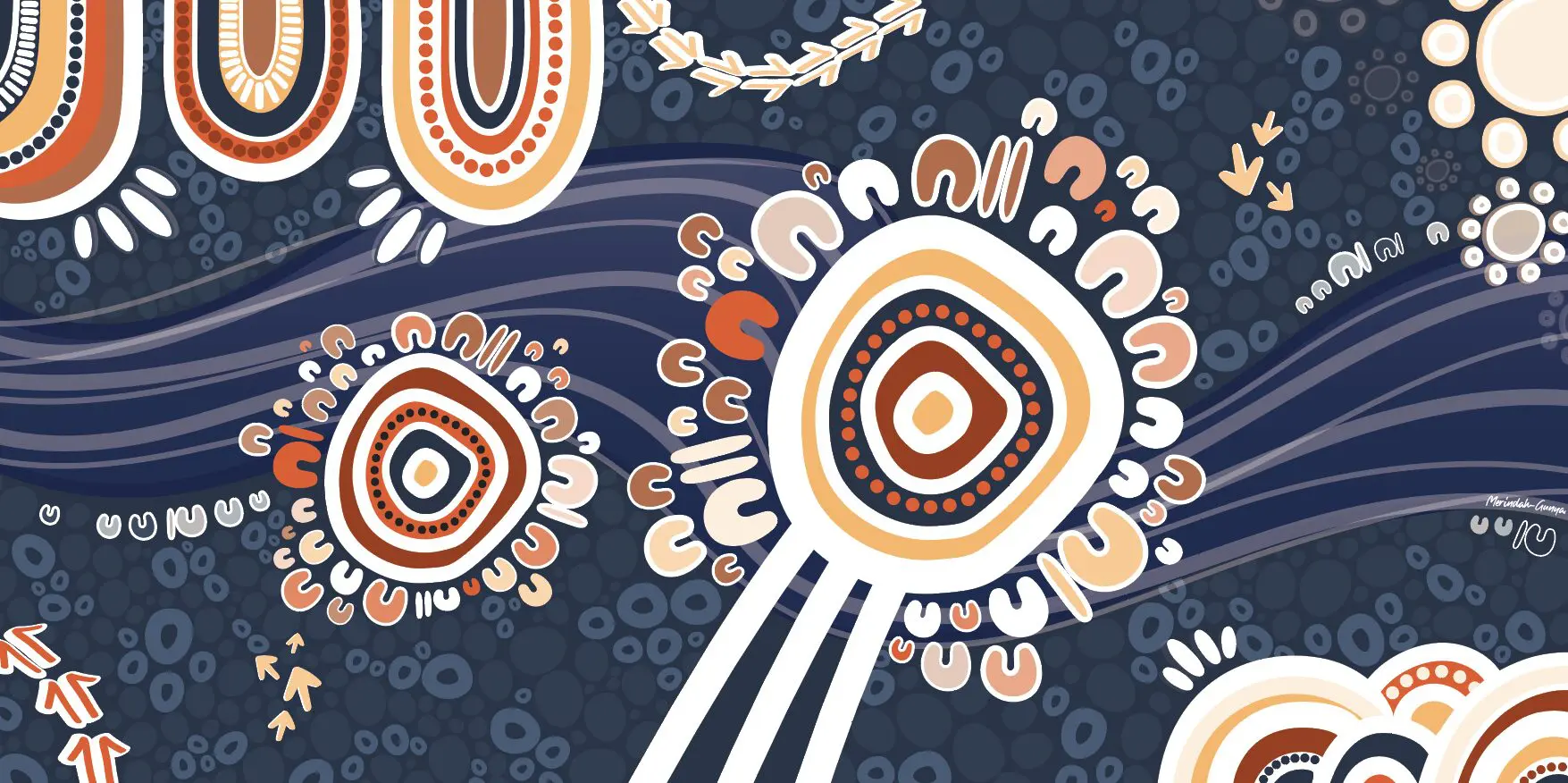About Banyule City Council
Banyule City Council exemplifies inclusive community engagement, demonstrating a strong commitment to ensuring that all voices, particularly those from underrepresented groups, are acknowledged, heard, and valued. This dedication is reflective in various initiatives, including active listening, diverse representation, accessible communication, and precinct-based approaches. As a result, Banyule City Council’s ongoing initiatives are fostering better outcomes, enhancing communication, and strengthening relationships with the community.
The Goal
A shining example of these efforts is the Council’s recent collaboration with First Nations artist, Merindah-Gunya. This initiative aimed to create new artwork for Shaping Banyule, fostering a more inclusive and welcoming environment for both First Nations people and the wider community to actively participate in and engage with Council projects.
The Approach
To create this piece, Merindah-Gunya collaborated with Aboriginal and Torres Strait Islander staff members at Banyule City Council, adhering to cultural protocols to honour their unique knowledge of the land and their contributions. The design embodies a deep connection to the place and symbolises the Council’s commitment to community engagement and reconciliation.

“This artwork tells a story of community connection and collaboration, through the rich tradition of Aboriginal storytelling. It portrays the enduring and harmonious relationship between Banyule City Council and the land, reflecting a timeless connection embedded in the cultural fabric of Country.” Merindah-Gunya, First Nations Artist
The Result
The artwork was unveiled at an in-person event during ‘Reconciliation Week’, a time when Australians reflect on shared histories, cultures, and achievements while considering ways to contribute to reconciliation in Australia. Over 70 people attended the event, including staff, Councillors, community leaders, and members of Banyule’s RAP (Reconciliation Action Plan) Advisory Committee. This artwork was also displayed on banners, merchandise, and printed flyers for attendees to take home.
Merindah-Gunya highlights the powerful symbolism woven throughout the artwork, emphasising how each element contributes to the overarching narrative of community and culture.
“The artwork shows a diverse array of figures—people of all shapes, sizes, and colours—forming a mosaic that radiates from the core of the community. This visual celebration underscores the truth that people are the heartbeat of any thriving community, symbolising the inclusive spirit that Banyule City Council values. Other symbolic recognition includes the hills in the bottom right-hand corner and the native animals scattered throughout. The hills are a reflection of the Council’s name “Banyule” meaning “Big hill” in Woi-Wurrung language. The stars in the top right-hand corner are for past local Elders that played a key role in continuing culture.”
To further promote the new artwork to the wider community, Banyule introduced branded merchandise at events, featured the artwork in the July edition of the Banyule Banner newsletter, and launched a Shaping Banyule webpage on their online engagement platform to showcase Merindah-Gunya’s contribution and share the story behind the artwork.
Belinda Coombs, Communications & Engagement Officer at Banyule City Council, shared her advice on enhancing inclusivity for community engagement professionals.
“Educate yourself or speak to others who have an understanding so you continuously learn about different cultures, identities and experiences and respect diversity. Listen actively and pay attention to the needs and perspectives of all the individuals. Ensure everyone feels heard and valued and check that you have understood what they’re saying is correct. Create safe spaces to foster environments where people feel comfortable expressing themselves without fear of judgment or discrimination and seek feedback to improve your practices and address any areas of exclusion.”
Banyule City Council’s dedication to inclusive engagement sets a high standard for community practices. Their collaboration with Merindah-Gunya highlights this commitment by creating a welcoming space for all, particularly First Nations and underrepresented groups. This initiative not only strengthens community relationships but also ensures all voices are valued, leading to better outcomes for everyone involved.



